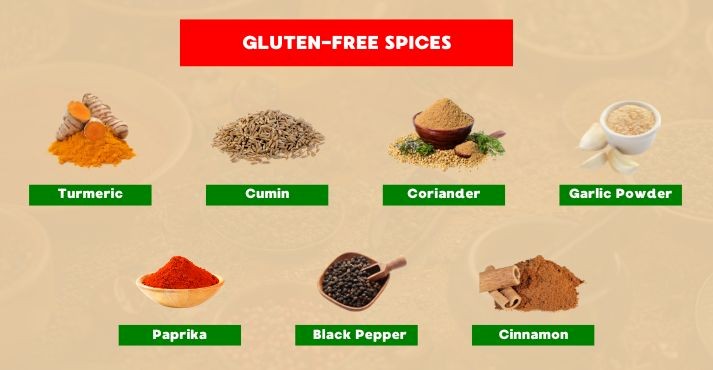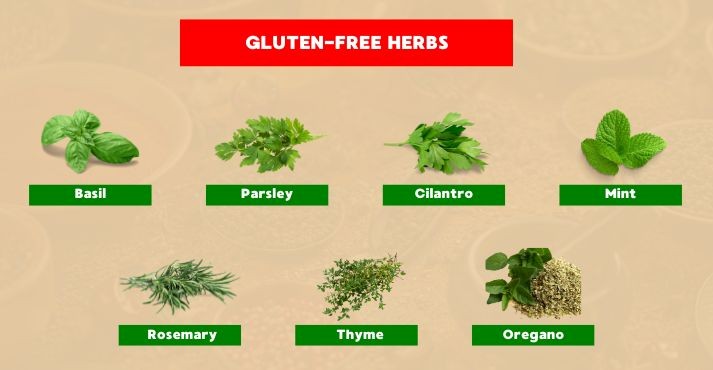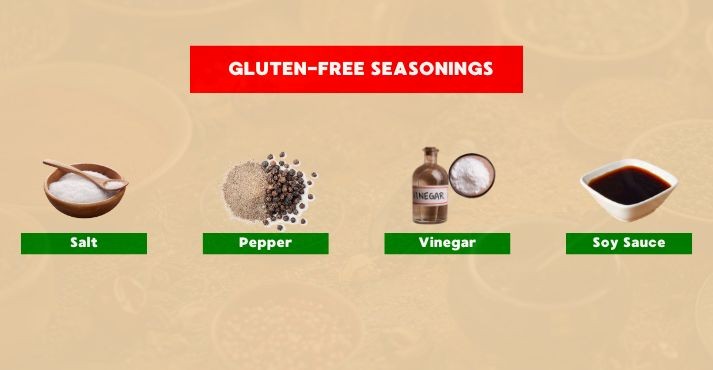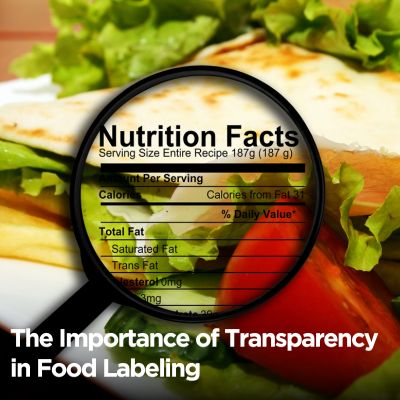For those with gluten intolerance or celiac disease, it’s essential to carefully check what goes into their food. While avoiding obvious gluten sources is necessary, hidden gluten can appear in unexpected items like spices, seasonings, and herbs.
Even if these ingredients seem harmless, they may contain gluten or become contaminated during manufacturing.
With the growing demand for gluten-free products in Southeast Asia, finding suitable options is easier than ever. This guide will help you choose gluten-free spices, seasonings, and herbs so you can confidently enjoy flavorful meals.
Understanding Gluten in Spices and Seasonings
When managing gluten intolerance or celiac disease, it’s vital to understand that gluten can be hiding in places you might not expect, like spices and seasonings.
While the ingredients themselves may seem harmless, cross-contamination and hidden additives can make specific products unsafe for those with sensitivities.
This becomes important as awareness of gluten-free living grows, especially in regions like Southeast Asia, where the demand for gluten-free options is rising.
In fact, studies show that approximately 50% of individuals with celiac disease still face persistent inflammation due to inadvertent gluten ingestion, often caused by cross-contamination during food handling.
What is Gluten?
Gluten is a protein found naturally in wheat, barley, and rye. It is responsible for the elasticity of dough and gives bread its structure.
However, for those with gluten sensitivities, even small amounts can trigger symptoms. For people with celiac disease, consuming gluten can lead to severe health issues, including damage to the small intestine.
For non-celiac gluten sensitivity, symptoms may range from digestive discomfort to fatigue and joint pain.
Hidden Sources of Gluten in Spices
Not all spices and seasonings are equal; some may contain hidden gluten, which can be caused by cross-contamination during processing. Even a tiny amount of gluten can transfer in factories, where spices are often processed alongside wheat-based products.
Additionally, additives like malt or hydrolyzed wheat protein, common in some spice blends, are food allergens that may trigger reactions in those with gluten sensitivities.
To avoid unintentional exposure to gluten, it’s essential to read labels carefully and choose certified gluten-free options when possible.
Naturally Gluten-Free Spices, Herbs, and Seasonings
Cooking without gluten doesn’t have to mean compromising on flavor. Many spices, herbs, and seasonings you love are naturally gluten-free and safe for your dishes. Not only do they enhance flavor, but they also provide a variety of nutrients that support your health.
While it’s always important to stay vigilant about cross-contamination, this guide will help you confidently stock your kitchen with naturally gluten-free options, allowing you to explore delicious, vibrant flavors without worry.
Gluten-Free Spices

Spices are a fantastic way to add depth and complexity to your meals, and the best part is that many of them are naturally gluten-free. Here’s a rundown of some staple spices that are safe for those avoiding gluten:
- Turmeric: This golden spice has an earthy flavor and a vibrant yellow hue. Common in curry powders, turmeric is a must-have in your gluten-free spice cabinet.
- Cumin: With its warm, slightly smoky flavor, cumin is a versatile spice used in many cuisines worldwide, from Indian to Middle Eastern dishes.
- Coriander: Known for its citrusy, light flavor, coriander seeds are often found in spice blends and can bring a unique zing to soups, salads, and stews.
- Garlic Powder: A simple yet powerful seasoning, garlic powder adds a savory and slightly sweet kick to almost any dish, from stir-fries to roasted vegetables.
- Paprika: Whether it’s sweet, smoked, or hot, paprika adds mild heat and a beautiful red color to dishes. It’s commonly used in Spanish and Hungarian cooking.
- Black Pepper: One of the most common spices in kitchens, black pepper adds just the right amount of heat and complexity to dishes, from soups to roasted meats.
- Cinnamon: Known for its warm, sweet flavor, cinnamon is often found in baked goods and savory dishes like curries. It adds depth and aroma to everything it touches.
Gluten-Free Herbs

Herbs are another essential part of flavorful cooking, and the good news is that many fresh and dried herbs are naturally gluten-free. Here are a few go-to herbs that are perfect for adding freshness and zest to your meals:
- Basil: With its sweet, slightly peppery flavor, basil is a primary ingredient in Italian and Southeast Asian dishes. It’s great for pasta sauces, salads, and even pesto.
- Parsley: This fresh herb has a mild, slightly peppery taste, making it perfect for garnishing and adding flavor to soups, stews, and salads.
- Cilantro: Cilantro’s bright, citrusy flavor adds a refreshing burst of flavor to salsas, curries, and as a garnish for various dishes.
- Mint: Refreshing and cool, mint adds a unique flavor to drinks, desserts, and Mediterranean dishes like tabbouleh and lamb.
- Rosemary: With its bold, pine-like flavor, rosemary is excellent for roasting meats and vegetables or as a savory herb in breads and sauces.
- Thyme: Thyme has a subtle, earthy taste that pairs well with various dishes, including soups, stews, and roasted meats.
- Oregano: Often used in Italian and Greek dishes, oregano brings a slightly bitter, herbaceous flavor to sauces, pizzas, and grilled meats.
Gluten-Free Seasonings

Seasonings are often overlooked but can make or break a dish. Fortunately, plenty of gluten-free options are available to mix with your natural food. This gluten-free seasoning list includes some great choices to elevate your meals:
- Salt: If you’ve been thinking, “Is salt gluten-free?” the answer is yes! Salt, whether table salt, kosher salt, or sea salt, is naturally gluten-free. You can easily use it in your cooking without worrying about gluten exposure. However, be cautious with flavored salts containing gluten-based additives or other potentially risky ingredients.
- Pepper: Like salt, pepper is a must-have in any kitchen and is naturally gluten-free. Whether you prefer freshly ground black pepper or a pre-ground option, it’s safe for those on a gluten-free diet.
- Vinegar: Most vinegars are gluten-free, but some, like malt vinegar, are made from barley and should be avoided. To ensure gluten-free cooking, opt for distilled apple cider or white vinegar.
- Gluten-Free Soy Sauce: Traditional soy sauce contains wheat, so look for tamari or gluten-free soy sauce, which is made without wheat and safe for gluten-sensitive individuals.
Carefully selecting spices, herbs, and seasonings can enhance your cooking without worrying about gluten sneaking into your meals. Always check for certifications or labels that confirm products are gluten-free when purchasing pre-packaged options.
Enjoy experimenting with these spice blends without gluten, which will bring a world of flavors to your kitchen, whether preparing hearty meals or delicious vegan food!
How to Identify Gluten-Free Spices and Seasonings
When choosing gluten-free spices and seasonings, it’s essential to pay attention to what’s in them. Not all spices are created equal. Some may be processed with gluten-containing ingredients or cross-contaminated during production. Learning to read labels and choosing trusted brands will help you confidently select gluten-free meal options.
Additionally, when selecting spice blends, it’s important to be aware of the possibility of food additives containing gluten or other allergens. Read the ingredient list carefully and look for certifications like “gluten-free” or “certified gluten-free” to ensure the product is safe.
Reading Labels
When reading gluten-free spices and seasonings labels, it’s important to check the ingredient list carefully. Look for gluten-containing ingredients like wheat, barley, or rye, but keep an eye out for hidden sources, such as malt (which comes from barley) or hydrolyzed wheat protein.
In addition, many reputable brands now include “gluten-free” or “certified gluten-free” labels, which indicate that the product has been tested to meet gluten-free standards.
For extra peace of mind, especially for products like spice blends, these certifications help guarantee that the product is safe for people with gluten sensitivities.
Trusted Gluten-Free Brands
Various trusted brands offer safe, gluten-free options for spices and seasonings, ensuring quality and reliability. Well-known international brands such as Simply Organic and McCormick offer gluten-free-certified products that are widely available in Southeast Asia.
Local brands, like Southeast Asian Organic, also provide certified gluten-free spices and offer more region-specific flavors.
While many spice brands prioritize safety, it’s always best to verify the packaging for certification labels, especially when purchasing blends that might include gluten-based additives or be processed in facilities that also handle gluten products.
Conclusion
Cooking with gluten-free spices, herbs, and seasonings doesn’t mean sacrificing flavor or creativity. You can safely enhance your meals by choosing naturally gluten-free options like turmeric, cumin, and basil and being mindful of potential cross-contamination.
Reading labels and seeking trusted gluten-free brands is also important in making informed choices.
With the growing demand for gluten-free products in Southeast Asia, finding spices and seasonings that meet your dietary needs is easier than ever. By following these tips, you can rise to healthy indulgence, enjoying diverse, flavorful dishes while staying gluten-free.





























